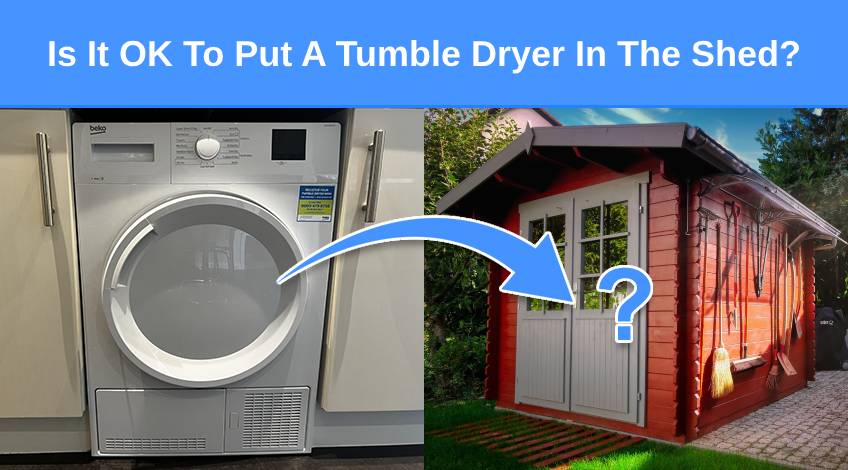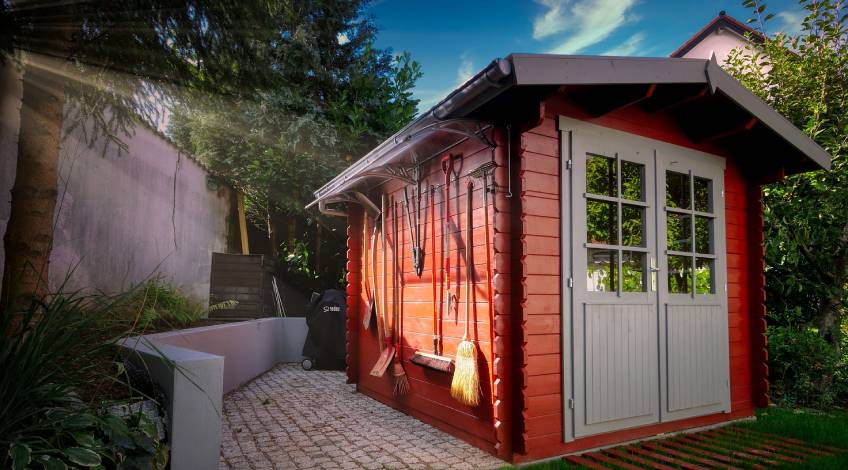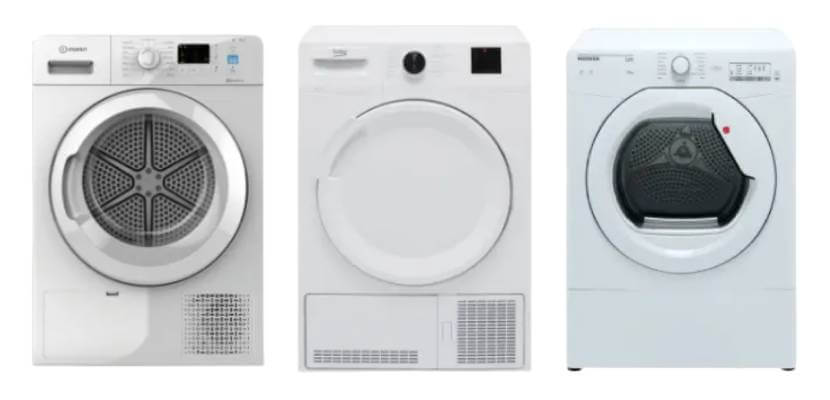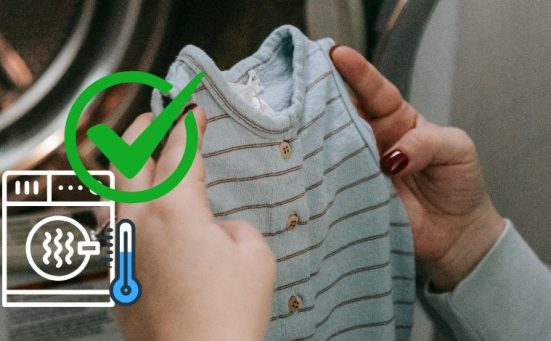
Is It OK To Put A Tumble Dryer In The Shed?
If you’re wondering whether your shed can be a good place for your tumble dryer, the answer is a clear yes, but only if it meets the necessary requirements.
With some careful considerations and the right setup—think electrical sockets, ventilation, and stability—it can indeed be the perfect spot for your tumble dryer.
But before you roll in your dryer, there are a few things you should know to make sure everything runs smoothly.
Read on to find out what the shed needs to accommodate your tumble dryer.
Is Your Shed Ready For A Tumble Dryer? (checklist guide)
Your shed may need some upgrades to safely store a tumble dryer. Let’s make sure your shed is up for the job. Here’s a simple checklist to help you:
Shed Has A Safe Socket
First things first, check if your shed has an accessible electrical socket. If not, consult with a qualified electrician before installing or modifying any electrical work in your shed.
It’s important to follow the specific requirements outlined in Part P of the Building Regulations.
A certified electrician can assist you with the proper installation and issue a certificate to confirm that the shed complies with the regulations once the job is done. You can also use this certificate as proof for potential buyers if you plan to sell your house in the future.
Shed Has Proper Ventilation
If your shed lacks proper airflow, your dryer may encounter challenges. Tumble dryers generate a significant amount of heat during use, so a shed with good ventilation makes sure that the hot air doesn’t get trapped inside. This, in turn, helps prevent issues such as mould, damage to your machine, and an increase in energy consumption, leading to additional costs.
If you have a vented dryer, make sure there is a vent readily available in your shed to release hot air outside.
For condenser dryers, consider a netted air vent, which improves overall shed ventilation and protects against unwanted pests.
Shed Has Enough Space To House The Dryer
Make sure that your shed has enough space to comfortably accommodate the tumble dryer. Since dryers generate a lot of heat, having ample space helps prevent overheating during the machine’s operation.
Check that all sides are clear and free from any flammable items, such as gardening supplies and clothes. A clutter-free environment not only prevents overheating but also simplifies regular maintenance tasks, such as emptying the lint tray, to avoid buildup and accidents like fire.
Shed Floor Is Stable And Level

Tumble dryers vary in weight, and when in operation, they generate vibrations. A stable shed absorbs these vibrations and acts as a safeguard against unexpected tumbles or shifts during your dryer’s spin cycle, making sure that both your shed and dryer stay unharmed. This not only prevents potential accidents but also contributes to the longevity of both the dryer and the shed.
During installation, make sure your dryer sits on a level surface. If your shed floor isn’t even, consider adding supports or adjusting the feet of the dryer.
Shed Is Weatherproof
Make sure your shed is watertight and remains safeguarded against forms of water entry, especially during rainfall. A leaking shed can expose your appliance to water, potentially damaging its electrical components.
Regularly inspect the roof, walls, and foundation for any vulnerabilities, and address them promptly to protect both your shed and your appliance.
Extreme temperatures, whether hot or cold, can impact your tumble dryer. If the temperature drops below 5°C, moisture inside the dryer may freeze, leading to potential damage.
Similarly, in hot weather, your machine may overheat. Proper insulation can help moderate the internal temperature, but it’s essential to strike a balance that guarantees proper ventilation.
Shed Is Well Insulated
While thermal insulation in your shed may not be mandatory, it can offer several advantages depending on your specific circumstances.
Insulation aids in retaining heat during colder months and is beneficial for both the shed and your tumble dryer. The insulation helps to maintain a more stable internal temperature, preventing extreme cold that might affect the performance of your appliance.
A well-insulated shed requires less effort from the tumble dryer to maintain its operating temperature. This results in improved energy efficiency and reduced electrical costs.
If you have a condenser dryer, insulation becomes more relevant. It helps prevent the water collected inside the appliance from freezing during winter, avoiding potential damage.
On the flip side, insulation can pose challenges during hot weather. If your shed lacks proper ventilation, the trapped warm air can lead to overheating issues for your machine.
Tumble dryers can be surprisingly loud, generating vibrations and rumbling sounds during operation. Sound insulation in your shed helps muffle these noises, preventing disturbances to your household or neighbouring spaces.
Is It Safe To Put Your Tumble Dryer In The Shed?

Safety should be your top priority when relocating your tumble dryer. Here are some factors to consider:
Fire Safety
Safety is always the top priority when it comes to tumble dryer installation. As dryers generate a lot of heat, they shouldn’t be left unattended when in use.
Always keep an eye out for anything flammable nearby. Whether it’s gardening supplies, paints, or gasoline, these items can pose a fire risk.
If your shed is made of wood, it’s important to store such items separately for safety.
Electrical Regulations
If you’re thinking of tweaking the electrical setup in your shed, be sure to check Part P of the Building Regulations.
A qualified electrician can guide you through this process. This not only guarantees compliance but also a safe electrical environment.
Maintenance and Regular Checks
Safety isn’t just about the initial setup—it’s an ongoing commitment.
Regularly maintain both your shed and tumble dryer to avoid potential hazards. Cleaning filters, checking for lint buildup, and making sure the shed is damage-free contribute to your safety and the longevity of your appliance and shed.
Which Tumble Dryer Is Best For Putting In A Shed?

The type of tumble dryer you choose is important when it comes to putting it in a shed.
Vented Dryers
Unlike other dryers, vented ones need a way for the hot air to escape. Imagine it like this: if the hot air gets trapped, it can create moisture, potentially damaging your shed and your machine. So, make sure there’s a tight external vent fitted. This guarantees that the hot air goes outside, and no unwanted dampness stays inside.
If it’s not fitted snugly, outside air might creep into your shed, causing temperature swings and potentially defeating the purpose. Pay attention to the details when setting up your vent to keep things running smoothly.
Condenser & Heat Pump Dryers
Condenser and heat pump dryers are a bit different. They collect water internally, which means you don’t necessarily need an external vent.
However, having an air vent in the shed is still a good idea. Why? Because it helps release heat, preventing excess moisture buildup that can lead to dampness and mould. It helps maintain good ventilation, preventing any potential issues caused by excess heat.
Plus, a netted air vent not only improves overall ventilation but also keeps unwanted bugs from making your shed their home.
Which Is The Best Option For Your Tumble Dryer: Indoor Or Outdoor Placement?
Now, let’s break down the pros and cons of having your tumble dryer in the shed compared to inside your home.
Warranty Considerations
Before making any moves, take a look at your dryer’s warranty and handbook. Some manufacturers may have specific guidelines about where to place your machine.
Although not applicable to all types of tumble dryers, placing a dryer in a shed, which can be categorised as an unsuitable area for a dryer, may result in your appliance warranty being voided.
Temperature Impact
During the summer, the warmth produced by your dryer can contribute to your home’s overall temperature. Placing the tumble dryer in the shed helps in keeping your living spaces a tad cooler during the hotter months.
However, in colder seasons, like winter, the uninsulated shed might pose a challenge. The dryer may have to work harder to maintain a suitable temperature, potentially resulting in increased energy consumption and condensation concerns.
Space Optimisation
If your home is feeling a bit cramped, shifting your tumble dryer to the shed can work wonders. It’s a game-changer for making the most out of your indoor space, giving you extra room to do other activities without tripping over laundry duties.
Noise Reduction
Tumble dryers can be noisy, especially during operation. If peace and quiet are high on your priority list, putting your tumble dryer in the shed is a good idea. The shed acts like a buffer, muffling the vibrations and rumbling sounds that can echo through your living spaces.
SEE ALSO: Is It OK To Put A Tumble Dryer Under The Stairs?
Frequently Asked Questions
Yes, you can keep a tumble dryer outside the house, but it’s important to shield it from extreme temperatures and make sure there’s good airflow to prevent potential problems. Many people keep their dryer in the shed or garage and it works fine, as long as it meets certain safety criteria.
Absolutely, ventilation is a must for a tumble dryer. It helps disperse the heat, avoiding issues like mould, damage, and extra energy usage.
Sure, you can place a washer and dryer in a shed, but check that the shed is fit for the appliances, like electricity, space, and good air circulation.
Yes, it’s necessary to vent a tumble dryer outside, especially if it’s a vented type. This releases hot air and avoids excess moisture in the shed.
Absolutely, make sure there’s enough space around your tumble dryer. It helps prevent overheating and keeps regular tasks like lint tray cleaning straightforward.
The best place to put a tumble dryer depends on factors like ventilation, electrical access, and space. A shed can be suitable if it meets necessary requirements.
Also, follow us on Pinterest ...



